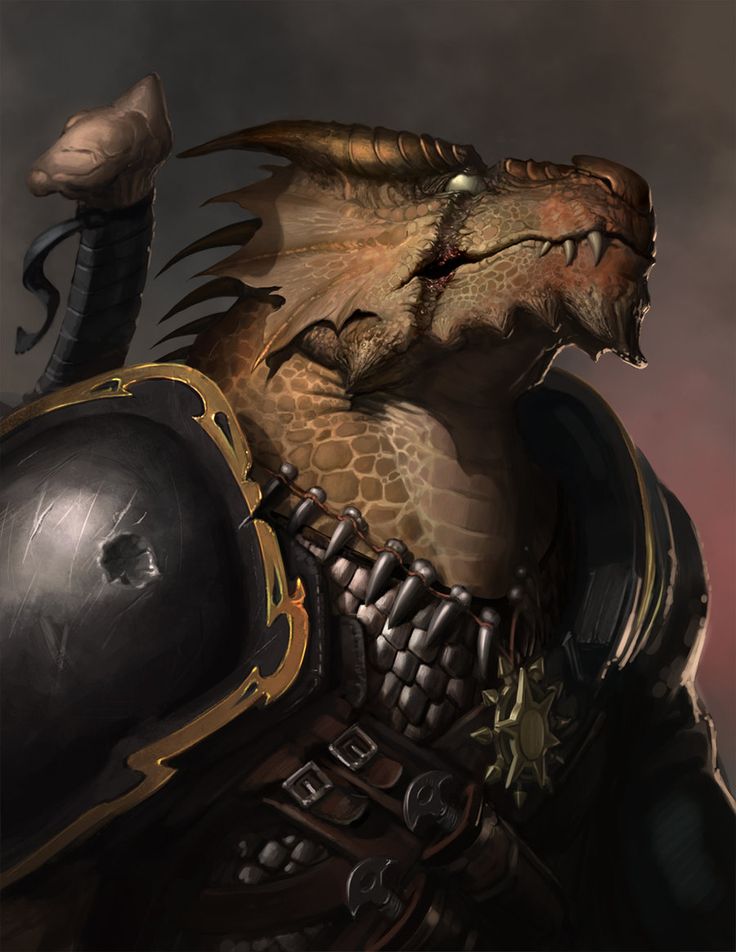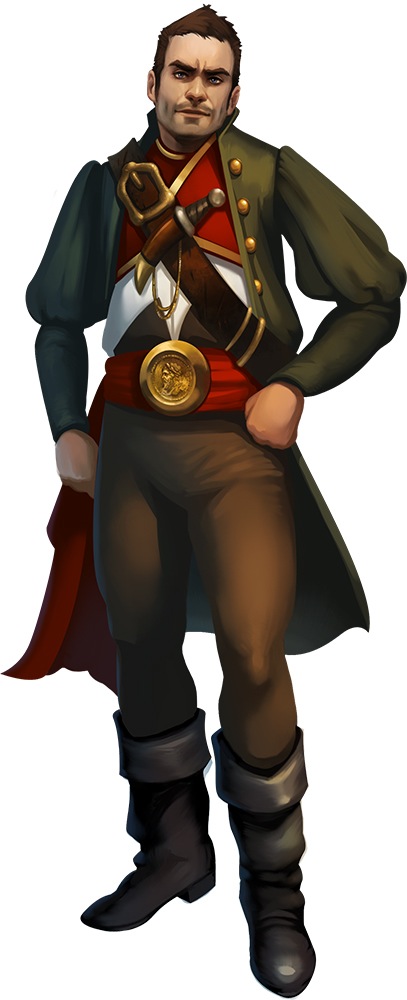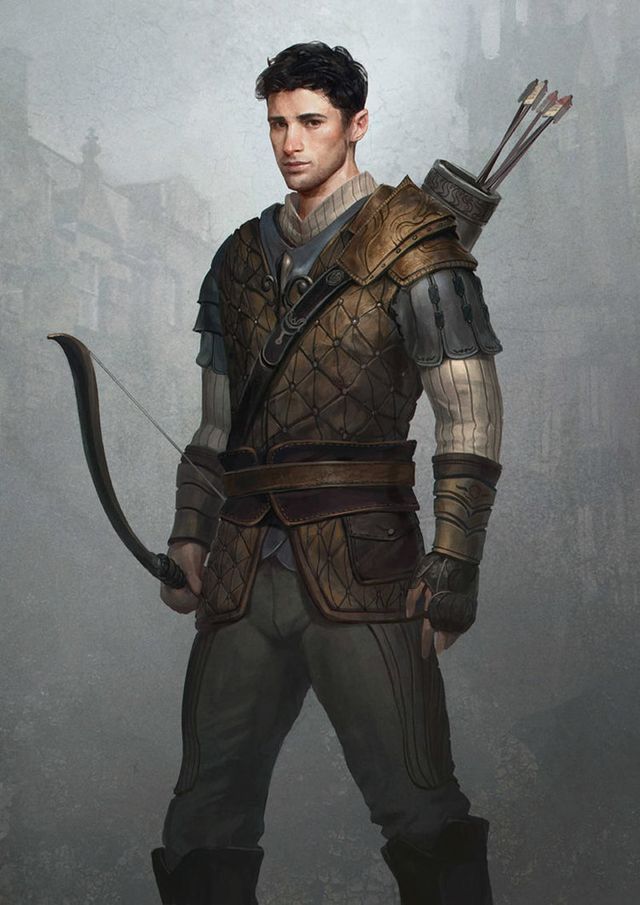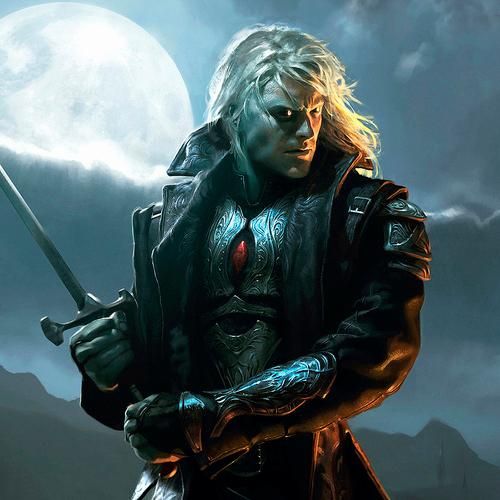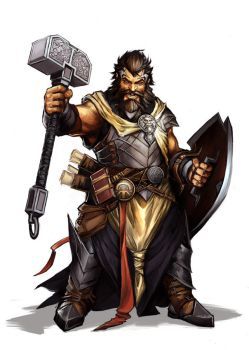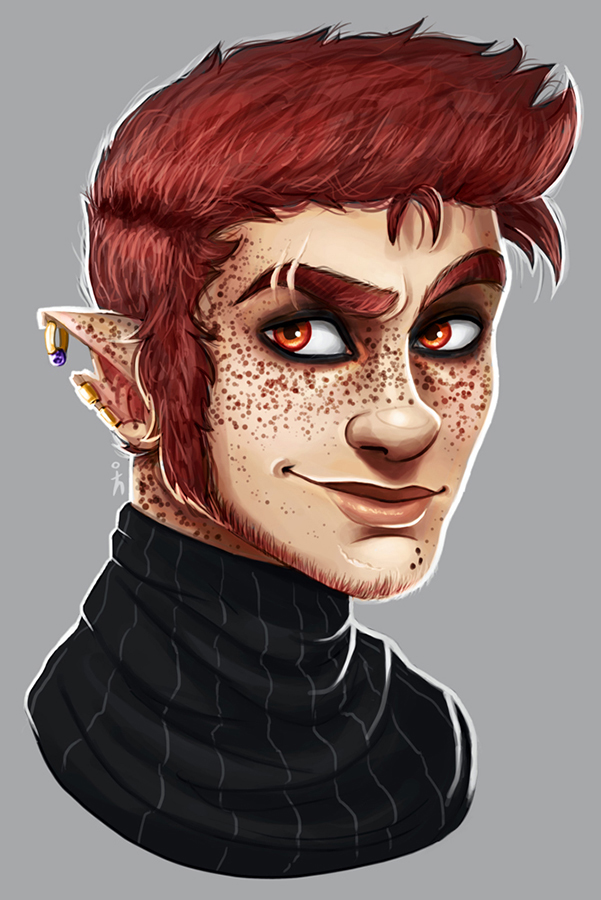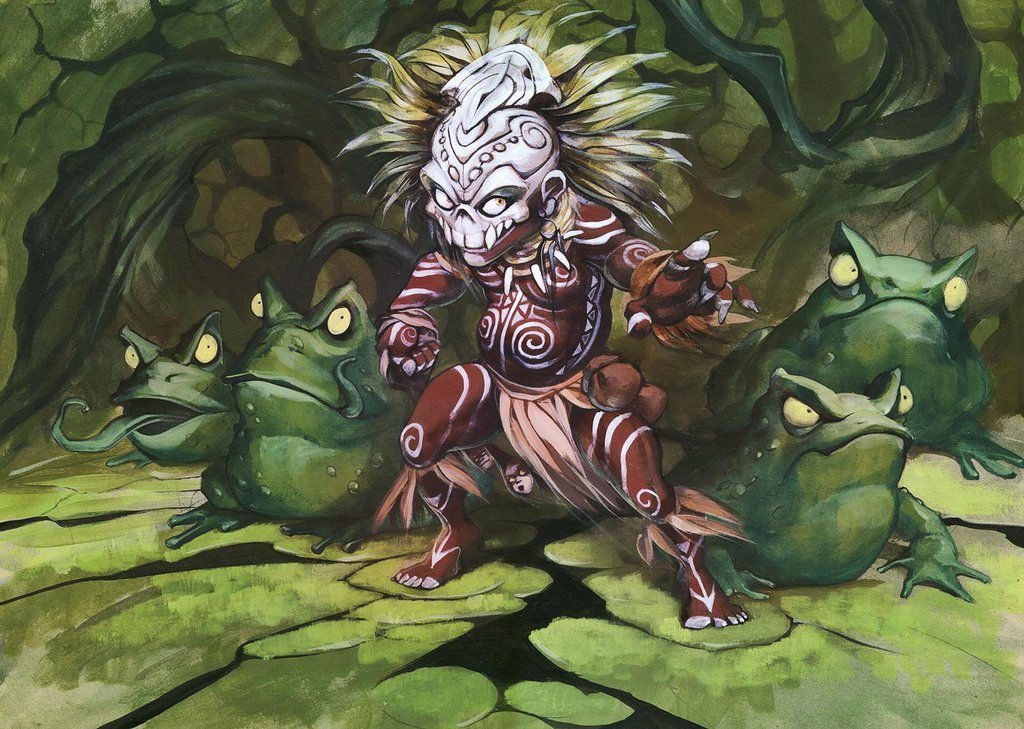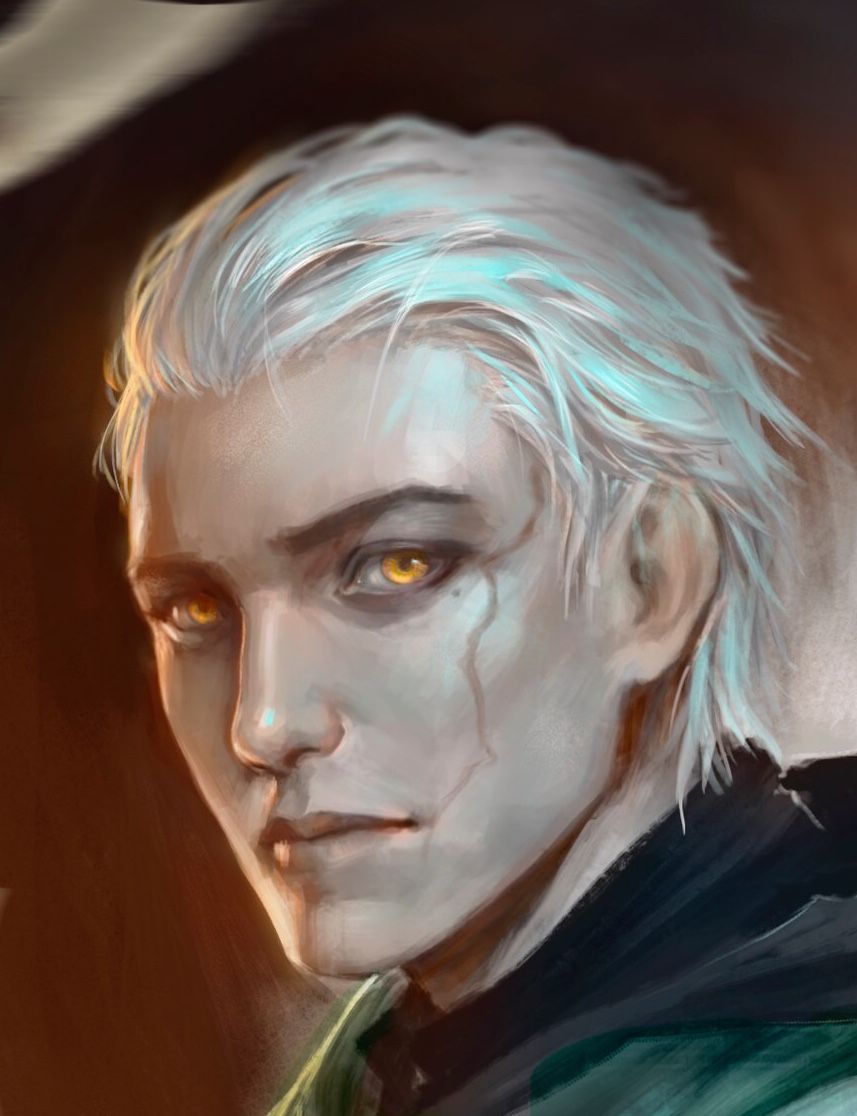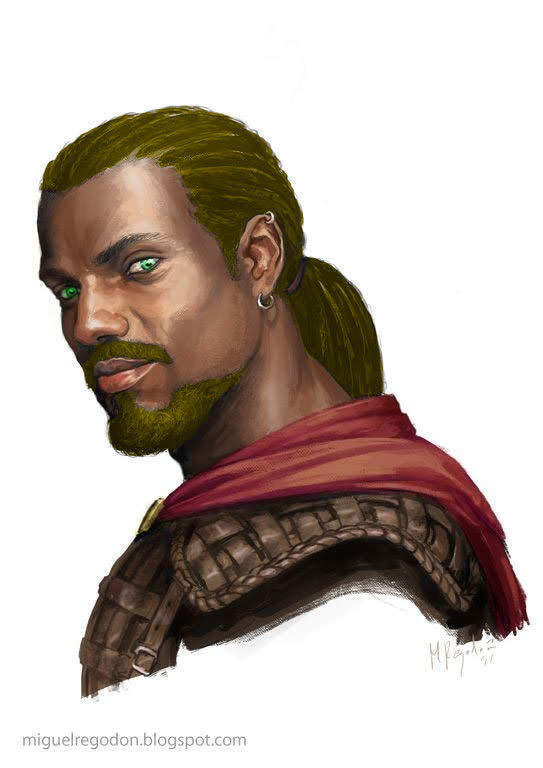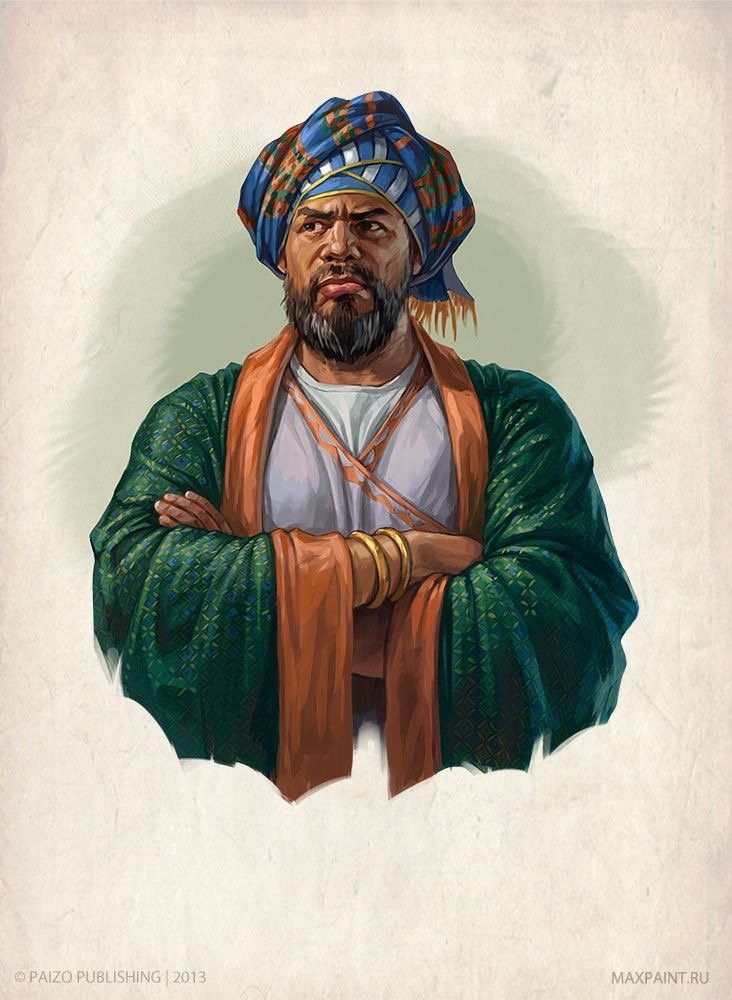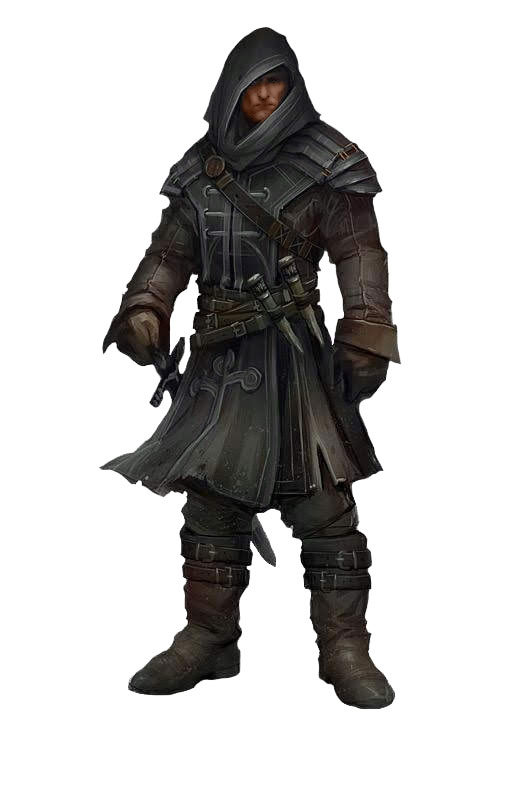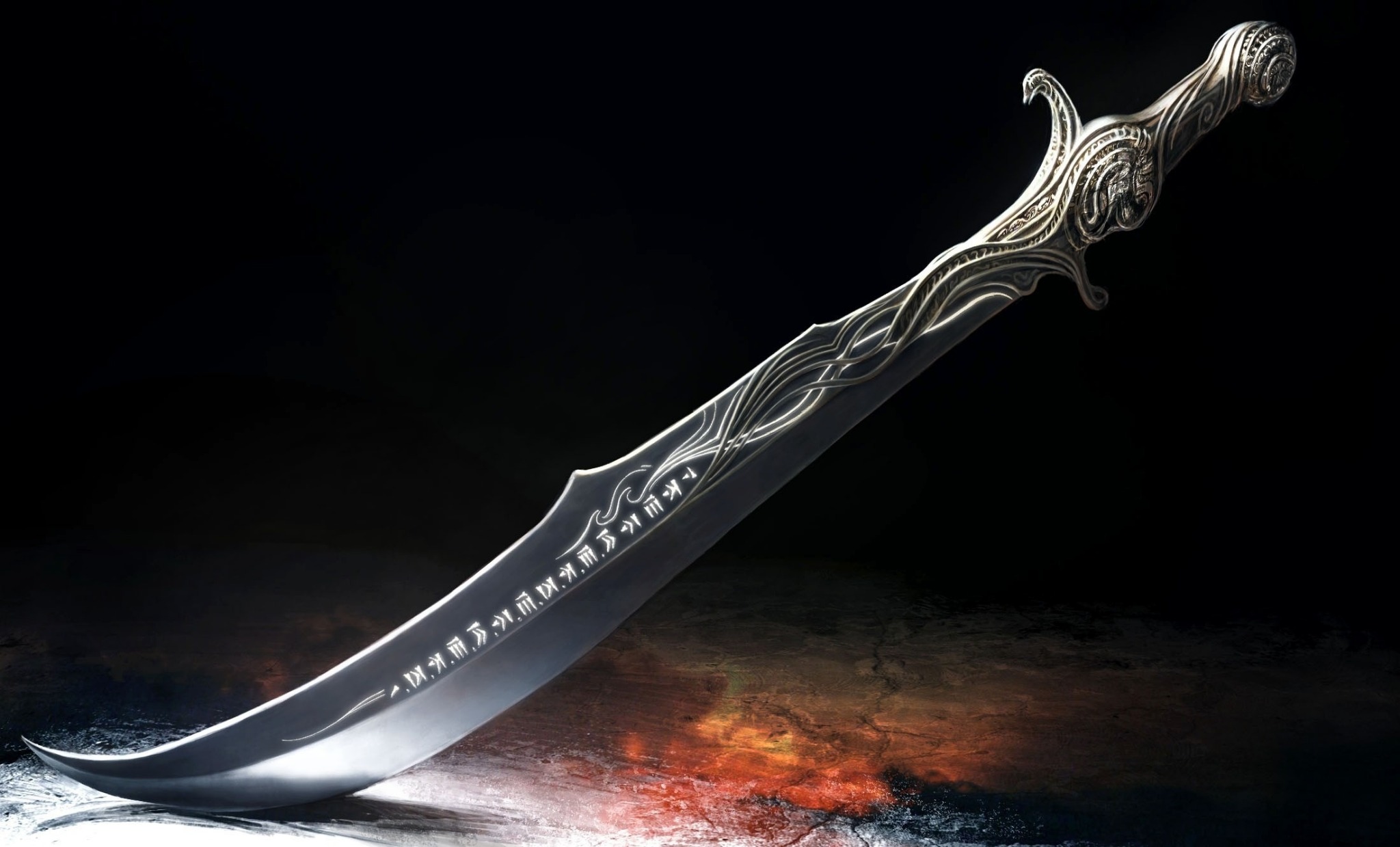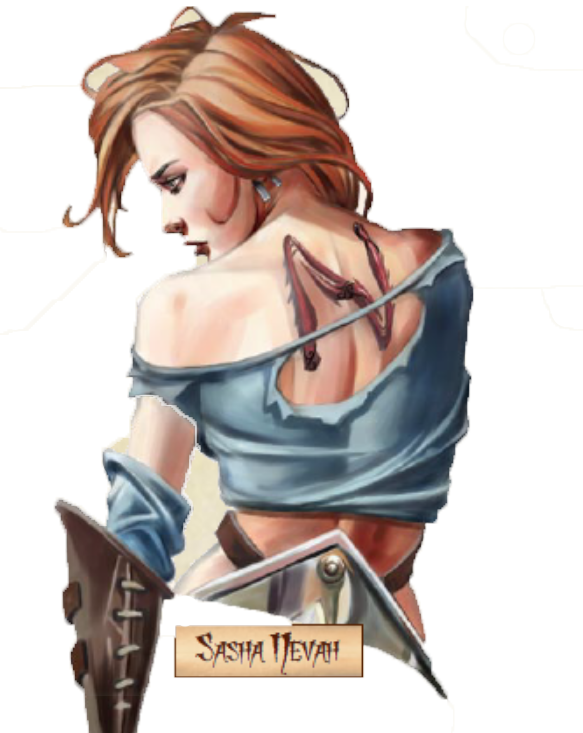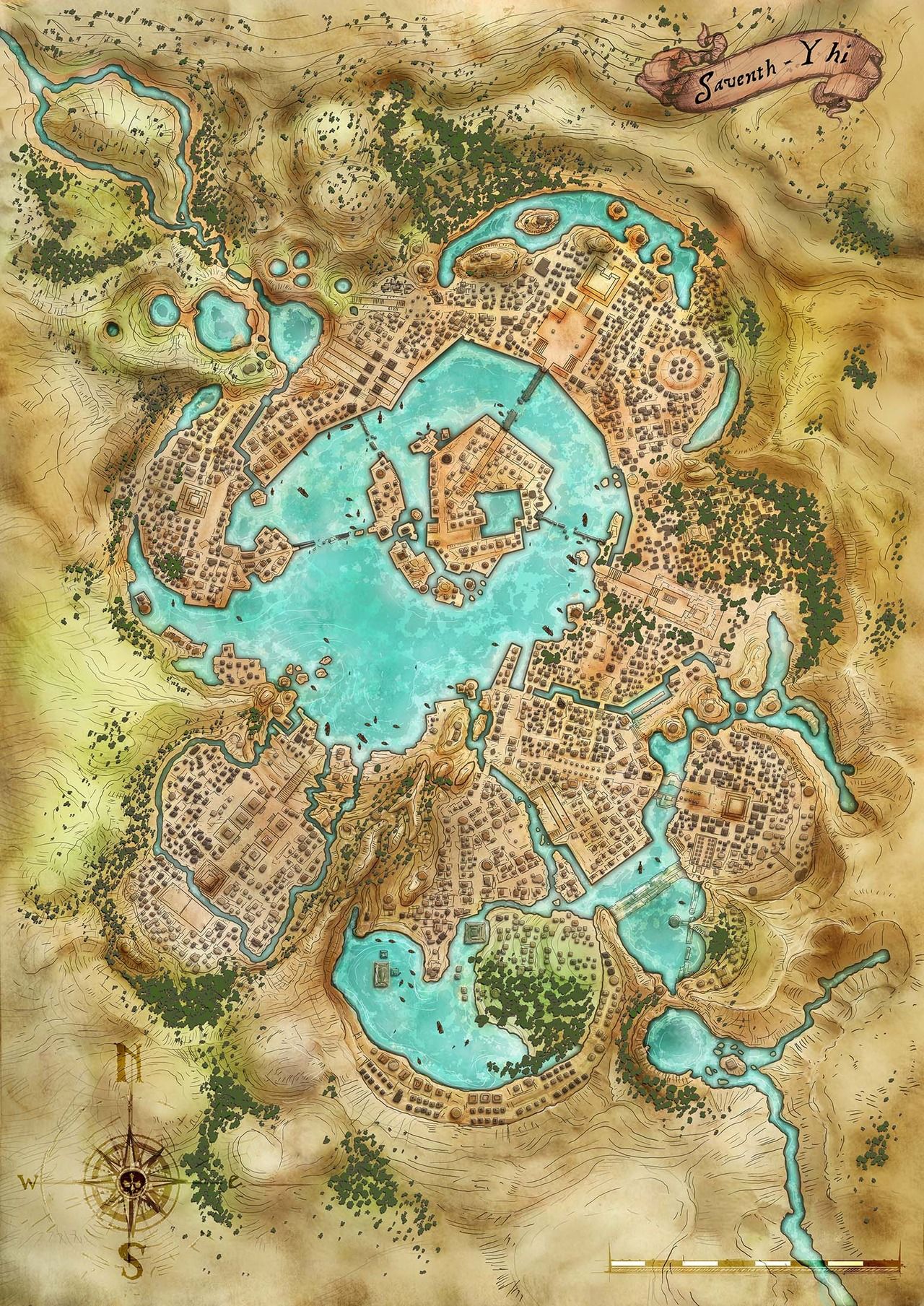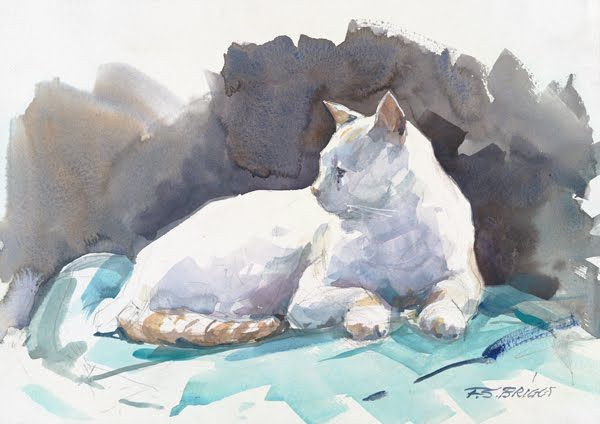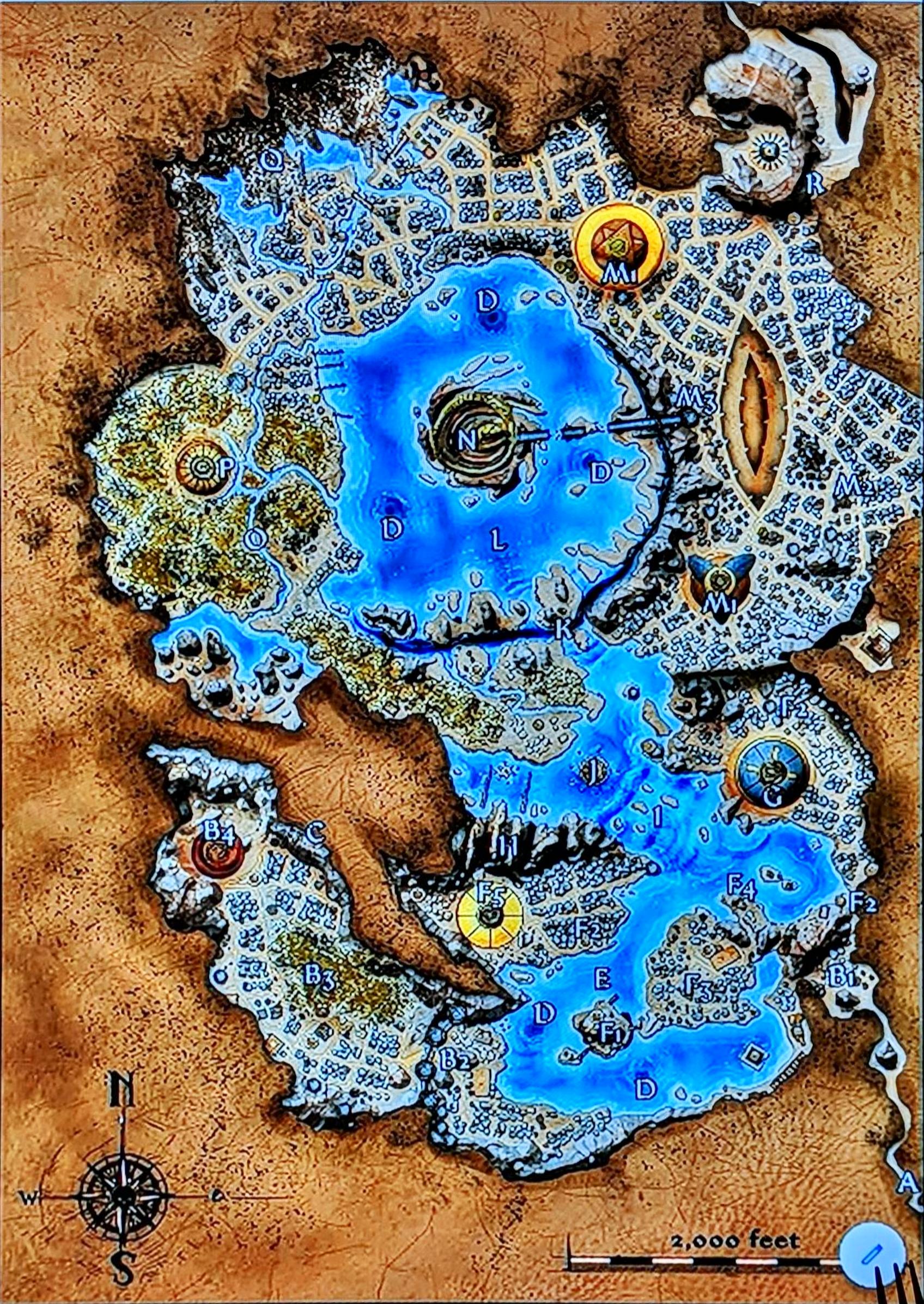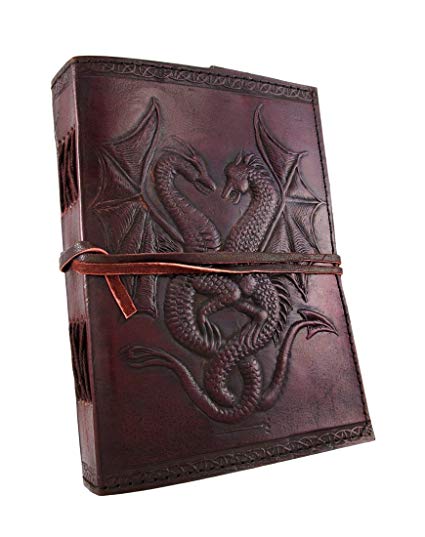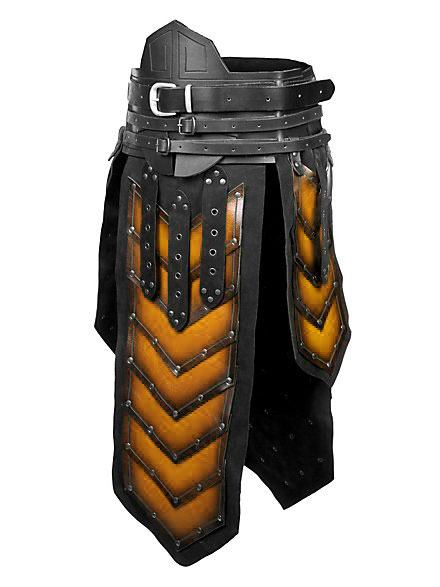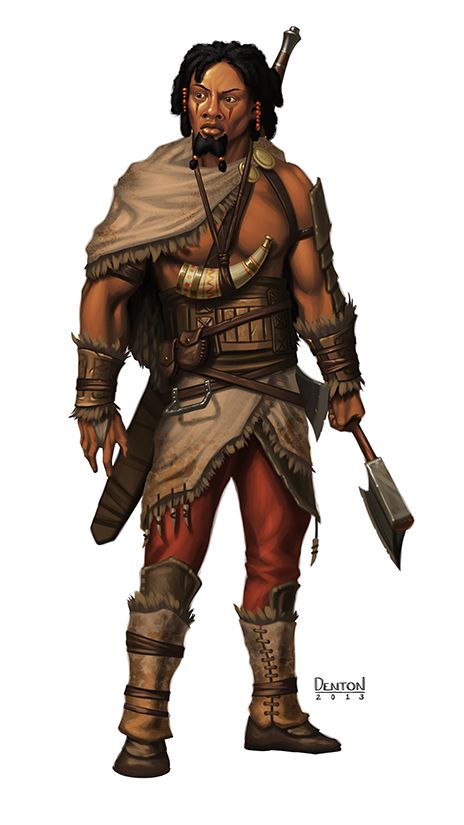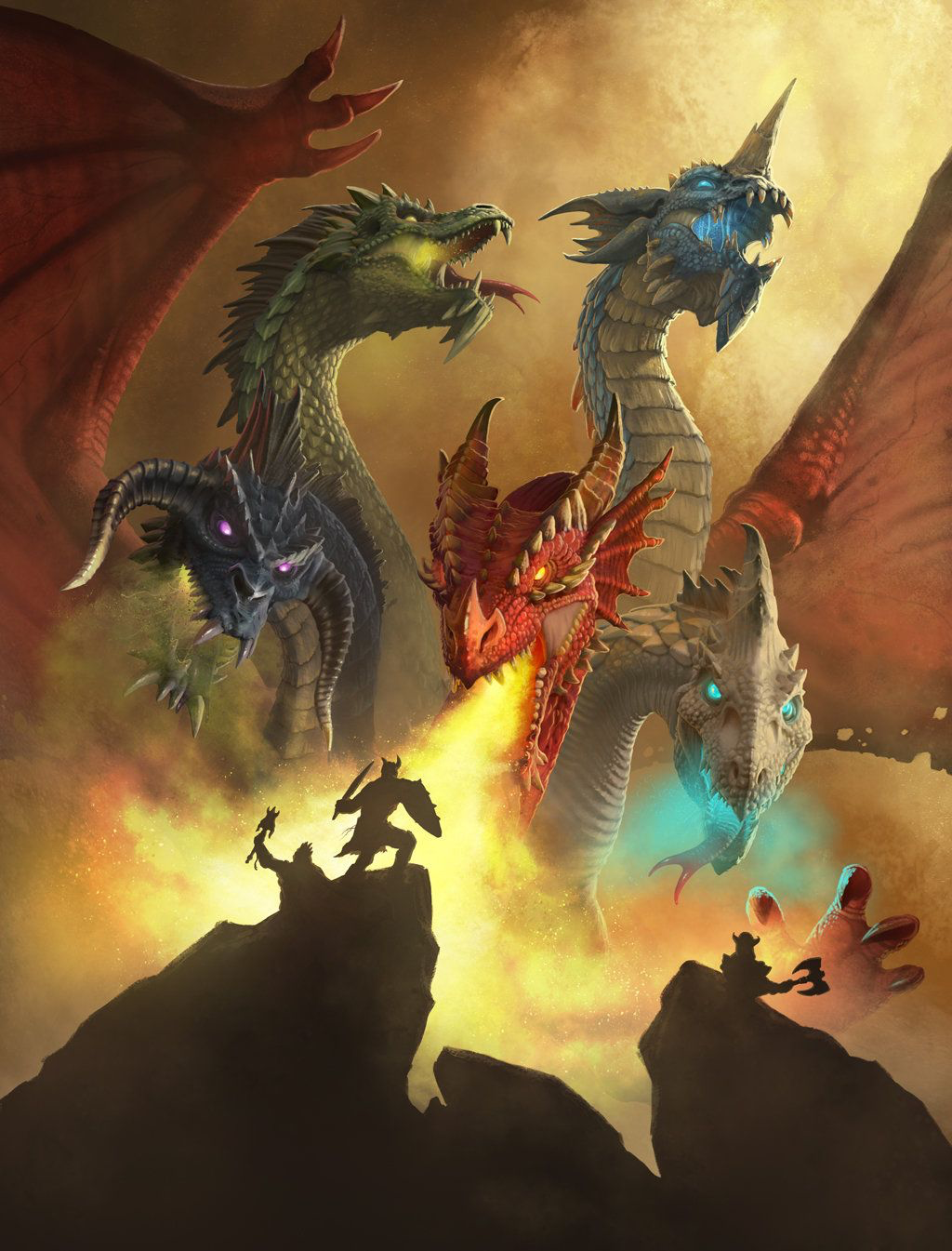Into the Dark Continent
The Cast
The Scenery
Sargava
Sargava is a land on the verge, simultaneously pushing on the edge of the map of the Inner Sea and facing an uncertain political future. The nigh impassable jungles of the Mwangi Expanse and the permanent hurricane known as the Eye of Abendego isolate Sargava from the rest of Garund, and its closest neighbors are only nominally nations themselves. The former Chelish colony also stands at the threshold of a new future free from colonial rule, making all things possible.
Yet the citizens of Sargava were not the first to attempt to carve civilization out of the wild region—since the dawn of history, humanity has strived to form great kingdoms amid the dangers of the Mwangi Expanse. Crumbled ruins are all that remain of these vanished empires, and even their names have been forgotten by history. Some scholars even whisper that lost ruins of the ancient Azlanti empire may be found in the unexplored jungles, but these crackpot theories are dismissed by more reputable sages. But whatever their origins, these ruins may provide incredible wealth and power to those who rediscover them. This dangerous land and the wilderness beyond serve as the setting of the Adventure Path.
Sargava Overview
Founded over 500 years ago by Prince Haliad I as part of Cheliax’s expansionist Everwar, Sargava stood as the jewel of the empire for centuries. But when Aroden died, the empire was thrown into chaos, and Sargava’s ruler backed the wrong house in the Chelish Civil War. House Thrune took control of Cheliax and sent a flotilla of warships to retake the colony that had supported their enemy in the bloody conflict. Grand Custodian Baron Grallus anticipated the onslaught, however, and made a fateful alliance with the Free Captains of the Shackles. Swooping out of Desperation Bay to pounce on the unsuspecting Chelish Navy, the pirates’ superior fleet swiftly ended the threat to their southern neighbor, and extracted a mighty price from Sargava for their efforts. To this day, vast portions of Sargava’s wealth flow into the Free Captains’ coffers for past assistance and assurance of continued naval protection.
Financially weakened by the Free Captains’ high demands and cut off from many of their former trade partners to the north, Sargava faces an even larger threat from within. The native Mwangi people, inspired by the teachings of a mysterious, undead child-god in the nearby city-state of Mzali, move ever closer to open rebellion to free themselves from colonial rule. While Cheliax no longer has an official stake in Sargava’s government, the colonial Sargavan minority maintains control of the vastly larger native population. But the natives know that they have the resources of the entire Mwangi Expanse at their backs, and that Grand Custodian Baron Utilinus’s government is in a poor position to quell a rebellion.
The PCs
Your band of characters begins the Adventure Path as passengers on a cargo ship called the Jenivere, headed south to Sargava. The voyage promises not only to bring your characters together as you face adversity, but also to set you on a path into the very heart of one of Golarion’s most feared regions in search of wealth, fame, and ancient secrets. PCs are not limited to origins in Sargava itself. In fact, characters in this campaign may be from just about anywhere. Countless motivations draw the daring, curious, and downright foolhardy to Sargava with the hope of attaining personal fame and fortune, and your PCs likely boast a variety of backgrounds and decidedly different reasons for traveling to Sargava’s capital city
Traveling Aboard the Jenivere
The Adventure Path begins with the PCs all aboard the same vessel, the Jenivere, a ship making the journey from Magnimar to Eleder. After days or weeks of time aboard the comfortable vessel (see the Journey of the Jenevire sidebar to determine how long) all the PCs know at least the following about their ship and shipmates.
Journey of the Jenivere
The Jenivere makes numerous stops on its nearly 4-month journey from Magnimar in Varisia to Eleder in Sargava. It has thus far taken the following course and is nearing its final destination. This itinerary should help characters determine where they boarded the Jenivere, potentially influencing their backgrounds or character traits.
| Port of Call | Days in Port |
|---|---|
| Magnimar, Varisia | Departed |
| Kintargo, Cheliax | 2 |
| Pezzack, Cheliax | 3 |
| Corentyn, Cheliax | 7 |
| Ilizmagorti, Mediogalti Island | 2 |
| Ollo, The Shackles | 7 |
| Quent, The Shackles | 2 |
| Port Peril, The Shackles | 3 |
| Bloodcove, Mwangi Expanse | 4 |
| Senghor, Mwangi Expanse | 3 |
| | Days at Sea | 71 | Total Journey | 104
The Jenivere is a large merchant ship, a Wyvern-class vessel commonly used by the Inner Sea nations for trade, exploration, and even war, valued for its combination of seaworthiness and capacity for carrying numerous passengers. Wyvern-class ships have made the dangerous journey to Azlant, Arcadia, and even around the southern tip of Garund, but the Jenivere and her crew run less perilous voyages. For the past several years, Captain Alizandru Kovack has made the western run between Magnimar to the north and Eleder to the south and then back with few complications, despite the fact that his route carries him through waters controlled by the piratical Free Captains of the Shackles, brushes with the eternal winds of the Eye of Abendego, and into periodic conflicts with the Nidalese navy. Although Captain Kovack’s crew appreciate this record, the baseless fear that the Jenivere has robbed luck’s coffers one too many times lies heavy on the hearts of many.
While the Jenivere is a merchant ship, primarily concerned with delivering goods to and from Sargava, she’s traditionally kept several compartments open to take on paying passengers. This trip is no exception. At the start of the campaign, the PCs probably number among these passengers, along with six other travelers aboard the vessel. As the characters have spent some time aboard the Jenivere, they have at least passing familiarity with these others making the passage to Sargava, and a few notable members of the Jenivere’s crew.

Crew
Alizandru Kovack: A Chelish man whose family has made the Magnimar to Eleder run for generations, Captain Kovack is pleasant enough with his passengers, but a strict disciplinarian when dealing with his crew.
Alton Devers: The Jenivere’s first mate is friendly with both passengers and crew, but he sometimes seems to chafe under the strong discipline of Captain Kovack.
Rambar Terillo: A taciturn man from Senghor, Ship’s Cook Terillo has served in that capacity aboard several ships, though apparently not on account of his culinary skills, which seem to be limited to watery soups.
Passengers
Aerys Mavato: This serious half-elven woman boarded in Port Peril, where she immediately got into a scrape with a crude sailor. She spends most of her time in her bunk, seeming to purposefully avoid fraternizing with the ship’s other passengers.
Dragomir Costu: Covered in fine bronze scales, the dragonborn look very much like dragons standing erect in humanoid form, but without the wings and tail. Dragomir boarded the Jenivere in Corentyn and he seems happy and talks about the adventures they will find in Sargava in a cheerful way. But he can be seen deep in his thoughts, with worry in his eyes when he is alone on the deck at nights.
Elnath Ophir: Elnath boarded in Ilizmagorti. He is in his late teens and is full of excitement and wonder for every new thing he sees. Elnath does not really seem to care where he is going, just that he is going somewhere. He is friendly and is there to help if anyone needs a hand.
Gelik Aberwhinge: A sharply dressed gnome from Magnimar, Gelik spends much of his time writing in the ships’ common areas, and takes every opportunity to tell long-winded stories, boast of past journeys, or quip about anything in his field of view.
Goswin: A dwarven gem merchant from the hills of Varisia, who has been on the voyage ever since it started in Magnimar. He likes to converse whenever he is on deck or at mealtime, often talking about Eleder and the jungles of Mwangi with excitement.
Ieana: A bookish Varisian scholar who tends to keep to herself, Ieana is traveling to Sargava to explore the ancient ruins there. Rumors aboard the ship alternately suggest that she’s the Jenivere’s owner, a Chelish agent, or Captain Kovack’s secret lover. Ieana keeps mostly to herself, and grows more intent on her studies with each mile the ship travels closer to Eleder.
Ishirou: A scruffy human of Tian heritage, Ishirou boarded at Bloodcove and waits to reach Sargava with a quiet eagerness. Aloof but not rude, he gives the impression of one who has had a hard life but find himself currently without direction.
Jask Derindi: A prisoner loaded aboard in Corentyn, Captain Kovack sees to this human’s needs with curt courtesy, but insists he be left alone, sequestered in the ship’s brig.
Primotep Papula: An unearthly handsome young man. He spends most of his time on deck where others can see him. Takes every opportunity to boast about past adventures and the greed deeds he has done. Makes no effort to hide the fact that he intends to “bring some order to the barbarians.”
Rufius Barbatus: This talkative chelaxian boarded in Kintargo. He claimes to be born down in Sargava, and seems eager to return to his homeland. He spends most of his time on deck, often reading the same book over and over.
Sasha Nevah: This red-haired human boarded the Jenivere in Ilizmagorti. Since leaving Mediogalti Island, the woman’s somber demeanor has gradually faded, revealing a boisterous and optimistic personality. None have yet questioned her about her missing left pinky finger.
The Journals of Urschlar Vohkavi
The city of Saventh-Yhi had been in a slow but steady decline for years prior to the Earthfall. Many of its seers and mystics feared some great calamity was coming, and the fact that certain prognosticators within Azlant would not respond to their queries led them to believe that something was brewing about which they were not being told. With their focus looking outward at the vague warnings and inscrutable portents that preceded Earthfall, they failed to look inward at a more immediate danger that faced them in the form of a lone madman bent on “saving” the city in his own twisted way.
For many years Urschlar Vohkavi, Pharasma’s high priest of prophecy in Saventh-Yhi, had served as a powerful member of the city’s Council of Seven Spears. In the years leading up to Earthfall, he became more and more troubled by strange portents of some vague destruction and catastrophe looming in the near future. His attempts to divine the nature of this gruesome fate were stymied again and again by the menacing silence coming from his superiors in Azlant and the lack of direct answers from his deity.
Like many of his peers among the high priests of prophecy and fate in Pharasma’s church, Urschlar had particular sensitivities that made him none too stable and more susceptible to stresses on the psyche. He found himself consumed by a dread knowledge that he could not fully fathom and was unable to effectively communicate to those around him, and this pushed him ever deeper into his eccentricities. After several years of beseeching his goddess for answers that were not forthcoming, he resolved to present his questions to her court personally. He gathered the necessary funds and magic to journey to the Boneyard itself to seek his answers.
In Pharasma’s Boneyard, Urschlar was unable to secure an audience with the Lady of Graves, for she was far too busy tending to her divine duties. Instead he found himself wandering aimlessly among the endless sepulchers of the Graveyard of Souls. There, among the bleached light and shadows of the death moon Groetus, Urschlar found a strange black flower growing within the partially unearthed bones of an ancient rib cage. When he plucked the flower, Urschlar heard a slippery, whispering voice that explained much of what he sought to know and gave him the means to make his people see it as well — the secret of midnight spores.
Shortly after Urschlar returned to Saventh-Yhi from his planar travels, Pharasma’s other two high priests of birth and death died under tragic circumstances, leaving the city stunned and bewildered, and granting Urschlar much greater influence than before. Using the strange circumstances as a staging position, he began publicly preaching of the still ill-defined disaster that threatened to overtake the city. To bolster the effects of his harangue, he began to secretly and slowly introduce the midnight spores he had begun cultivating into the city’s reservoir.
Although Urschlar’s own concentrated exposure to them had driven him irrevocably insane with paranoia, the midnight spores were not sufficiently concentrated to have overt effects on the city’s populace. Within a few weeks, however, their maddening effects had increased the sense of foreboding already encompassing the city. Fears were heightened, but only those few who were particularly susceptible to the spores suffered actual mental breaks, exhibiting random acts of violence or sudden collapses. Because no one understood the cause of these subtle-yet-pervasive phenomena, no investigation was made into them, and the city continued to suffer.
With more and more of the masses heeding his prophecies of doom, Urschlar continued to seed the city’s water supply with the midnight spores while poisoning the people’s minds with a growing sense of panic. Once the number of people attending his sermons reached a critical mass, Urschlar declared a major disaster was coming that would destroy the city if they were not prepared. He would not say what the calamity would be, but he assured the people and the city leaders that they must prepare or else be annihilated when disaster came.
The city heeded Urschlar’s warnings and gave him free reign in the preparations for the city’s survival. First he ordered the excavation of deep vaults beneath the city’s seven districts, where the populace and their most valued possessions could be safely sequestered when disaster came. Then, into one of these he moved one of the city’s most powerful artifacts, the Argental Font—a magical fountain bestowed upon the city by the gods, whose waters were said to cure any ailment and were one of the few means of curing the infection of the midnight spores.
Construction continued on the seven vaults, and Urschlar installed many hidden rooms and traps, deflecting any questions as to their purpose with ambiguous prophetic pronouncements. Urschlar began secretly cultivating major growths of the midnight spores in these rooms, creating a vast storehouse of the mold with which he could continue the city’s paranoid reliance upon him, fearing that if the spores’ influence were broken, he would no longer be heeded and the city would be caught unprepared by the impending doom. In his own advanced lunacy, Urschlar could not see that his own actions in infesting the city’s populace with the madness-inducing spores were only ushering in the doom he was trying to avoid.
Earthfall’s sudden impacts on Golarion caused great upheaval and shifts in the earth, and as one particularly powerful tremor engulfed Saventh-Yhi, it disturbed the cultivating chambers of the midnight spore growths and vented the spores over the entire city through newly created fissures and cracks. The black cloud of deadly spores caused the city to erupt in a violent spasm of chaos, and in a single night Saventh-Yhi tore itself apart. Those few who survived the initial turmoil within the city stumbled dazedly into the surrounding jungle, consumed from within by spore-induced insanity, and died horribly among the jungle’s natural dangers. With the death of these last few maddened survivors, so too died all direct knowledge of the city of triumphant Savith, deep in the heart of Garund.
Urschlar himself was not spared the calamity. The disaster had arrived much sooner than his own maddened prophecies had predicted, and proved greater than even his own fevered imaginings. When the tremors struck the city, he found himself inadvertently exposed to a toxic concentration of the purified midnight spores. His only hope lay with the enchanted waters of the Argental Font that he had locked away…
The Midnight Spores
The spores from this dangerous mold is microscopic and only visible in large concentrations, and even then appear as nothing more than fine black dust. This black residue pervades the vault, growing in the cracks, seams, and crevices in the walls, floors, and ceiling, and invisibly permeating the very air of the vault. If a creature enters the vault, even into only a single room, it is unavoidably exposed to the midnight spores. The spores are omnipresent throughout the vault and cannot possibly be eradicated, cleansed, or avoided. Only a miracle or wish spell can kill the spores.
The midnight spores are a psychotropic extraplanar substance of unknown origin. They are not a poison or a disease, and immunity to such provides no protection, nor can magic that neutralizes such remove the effects of the spores. The spores can be absorbed through the skin as well as inhaled, so simply holding one’s breath provides no protection from exposure. However, the particular strain of midnight spores cultivated by Urschlar is very specific in its spores’ effects — the spores only affect living humanoid creatures. The spores are harmless to all other life forms.
The midnight spores cause paranoia in those exposed to them. When a creature first enters the vault, it is exposed to the spores and must make an immediate Wisdom save or begin suffering paranoia. The insanity inflicted by the spores is especially virulent, and takes effect immediately.
Each time a creature enters the vault — regardless of how long it remains within — it is exposed again to the spores. If an individual leaves the vault and reenters, that creature is considered to have been exposed again, regardless of how long or short of a time has passed. Likewise, certain areas of the vault contain higher concentrations of spores and count as new exposures.
Each exposure requires a new Wisdom save. Those who are not yet afflicted begin suffering from paranoia as soon as they fail a save. If a creature already suffering from paranoia is exposed again, it must make a new save or the current DC of its paranoia is increased.
If the PCs take any sort of precautions against contact with the spores (such as wrapping scarves over their noses and mouths, and so on), they gain advantage on saving throws against exposure to the spores.
A character suffering from paranoia is convinced that the world and all that dwell within it are out to get her. Paranoid characters are typically argumentative or introverted. The individual has disadvantage on Wisdom saves and Charisma-based skill checks, cannot receive benefit from or attempt the Help action, and cannot willingly accept aid (including healing) from another creature unless she makes a Wisdom save against the insanity’s current DC.
The story of Dragomir Costu
Nobody knows Dragomir’s dragon name. The ones that did, are dead. His mother died at childbirth and by that time his father was already dead. He was raised by relatives, but they all perished, one by one during Dragomir’s first years.
He was then raised by others, but nobody would dare to keep him long. At least not when the mishaps started happening; cattle dying and random accidents. At one point, rumours have it, he was even possessed by a fiend.
During the first six years of Dragomir’s life, he was passed along until one family had enough. Even though it’s not heard of to leave a Dragonborn young to humans, the family felt they had no choice. At the door steps of a Abadar temple, was Dragomir’s first encounter with humans, they were kind and took him in.
Dragomir remembered nothing.
A group of monster hunters in the guise of wandering Varisian craftsmen heard of the possessed Dragonborn and sought him out to slay him. When they found him, they decided that the Dragonborn wasn’t to blame and took him in, as their own. If nothing else, then to guard him.
They named him Dragomir, because he was without a name, which means “Silent Dragon”, because Dragomir hadn’t spoken to them, and would not, for at least a year. They kept him close, to watch his curse, but it seemed to be withdrawn. Maybe it was dormant, maybe it was gone.
The wandering monster hunters trained Dragomir to become a monster hunter. Even though the curse seemed to be withdrawn, Dragomir’s mood got darker every year.
After a few years as an apprentice monster hunter, he found himself walking alone in the woods near a river. In the river he discovered an old chest under water, with weights in it to stop it from floating up. The chest had been in the river at least a hundred years. In the chest he also found a dead white cat.
When Dragomir took the dead cat up, with the intent to give it a proper burial, it woke up and thanked Dragomir. She could mentally talk to Dragomir and said that her name was Talalai. The two became best friends and the cat was never far away from Dragomir. Since then, Dragomir felt happy and became more cheerful. It’s like something was stopping the bad thoughts entering Dragomir’s mind.
Dragomir didn’t know that Talalai was sent by the Eternal Citadel to watch over this young Dragonborn, to nudge him to do the right thing when the time would come.
Dragonborn grow quickly. They walk hours after hatching, attain the size and development of a 10-year-old human child by the age of 3, and reach adulthood by 15.
Now, Dragomir didn’t know his exact age, and had no idea when his birthday was. Nevertheless, the night when Dragomir turned 15, a group of monsters attacked and killed every single person in the camp. Dragomir survived by a stroke of luck, or maybe it was destined, and escaped to a nearby city with the things he could carry and his masters maul. Talalai was nowhere to be found.
Something unseen guided Dragomir towards a ship that was about to leave the harbor. Without thinking, he asked where the ship was bound and after he got a reply, he walked on board.
The ship was the Jenivere and would travel to Eleder. He found Talalai on the ship, and he became whole again. He also found new friends.
Everything was good.
Then Dragomir died.
Dragomir appeared in front of a shadowy figure with five dragon heads. She now had an excellent opportunity to tilt the scales. When Goswin tried to resurrect Dragomir, she didn’t allow it. Not until Dragomir made a promise.
Weeks passed and the nightmares became more frequent. Nightmares of chanting in the language of the dragons and the killing of the snake monster that believes itself to be better than a dragon.
Months passed and the internal struggle inside Dragomir was real. Talalai tried to comfort him in his dreams, but she was only a messenger.
Then Ydersius was defeated.
But Ydersius was not dead.
Then Dragomir remembered everything.
He jumped onto the back of the defeated snake god, uttered the forbidden chant in the language of the dragons long forgotten and crushed its skull in one mighty blow with the maul.
Finally Dragomir was at peace. His mind stopped being a battlefield.
The ones that would call him his friends looked in disbelief as Dragomir’s chest was ripped apart when a portal to another plane opened inside him and the five-headed dragon crawled out from the expanding portal.
